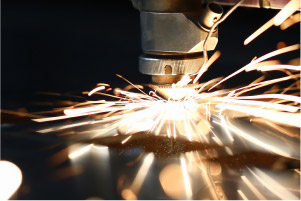The warehouse automation market is wide open with new providers joining the industry every quarter, and all of these new companies are priming the market for future consolidation. To set your company up for long-term viability, you need to take the correct steps forward. And a key step forward is to develop your product with cost optimization in mind.
While many line items affect your cost curves, there are ways for you to reduce your manufacturing costs to support rapid and profitable growth. Two key areas where you can look for potential savings are the materials that go into your product and the processes needed to produce them.
Optimizing design and supply chain to reduce the cost of your materials
When building your product, 70-80% of your costs are tied up in the raw materials needed for manufacturing. You can start chipping away at this large chunk by asking three questions:
- Is our product designed to meet our customers' needs, or are we over-engineering?
- Are the parts we’re using setting the product up for longevity?
- Are we sourcing parts through suppliers that can meet our cost and growth goals?
To get ahead of problems, it's best to ask these questions in the early stages of product development. That's when it’s easy to get caught up in building a product to survive any possible scenario instead of the working environments where it'll function. Take a look at your Custom-Engineered Components (CECs) like metals and plastics. One area that is easy to overlook is the metal enclosure – is it thicker than the working environment requires?

To set up your product for longevity and support cost neutrality goals, electrical components need to be reviewed. With technology consistently moving faster, some of these components are pushed toward obsolescence quicker than expected. The suppliers on your Approved Vendor List (AVL) may not be exposed to additional options if they are too entrenched in old technology. It's worth it to add alternative components to your Approved Material Lists (AMLs) so you’ll have options if lead times unexpectedly increase, prices go up or components are made obsolete.
If your suppliers can't determine whether components can meet your product longevity goals, then it's best to add new options to your AVL. To get more information on considerations you need to cover with your suppliers, check out our article, "How to scale manufacturing – should I scale or should I grow?"
For all of these scenarios, outsourcing through a partner is an option. Work with a company that has expertise in engineering design and supply chain services. Those partners will set you up to essentially design-out costs by finding components that do the same task at a lower cost while maintaining the highest-quality product. They should also have well-established relationships with key suppliers to ensure the consistent quality of the components.
Implementing manufacturing processes that reduce costs
In building your product, labor can account for 10-15% of your costs, and while that may not seem like a large portion, you can implement actions to drive early and long-term savings. As you're ramping up production, costs will start to level off. But until you meet those peak volumes, there are steps that you can take to lessen the cost burden, and they’re found in your manufacturing processes.
Lean manufacturing is one tactic that if deployed early, will add-in quality for your customers and help eliminate waste from your manufacturing processes. While this approach is well-known, it’s often not fully executed correctly. As you look to implement this practice, be thorough in your approach to make sure you’re getting the most value.

Another helpful process is zero defects manufacturing. Generally, this process means that you'll need to establish product quality checks and tests throughout your manufacturing process. While it might seem counterintuitive to add in steps, when used consistently, you'll find issues at small and manageable stages instead of large and costly ones. In addition, a well-defined test strategy not only contributes to zero defects, but can be automated for leaner test times and lower labor costs.
After you reach your steady volumes, moving manufacturing to lower-cost areas can make a big impact on your spending. But, you also need to make sure that your supply chain can support. The larger components used in some warehouse automation systems can be especially costly to transport if your supply chain isn’t in region.
Whether you're in production ramp-up or at steady volumes, outside resources can help ease the burden. The best manufacturing services providers will already have lean manufacturing, zero defects and automated test processes running – saving you from changing established workflows midstream while saving production costs. And, when you’re ready to move your manufacturing, a partner with a well-established global footprint can make a huge impact. These partners can make the transition from one region to another relatively seamless, especially if they offer supply chain services. They’ll have insight into the best suppliers to use in region to optimize costs and support your growth.
Partner with a company focused on your goals
Fortunately, global partners like Plexus are ready to help you with all your production needs. With more than 40 years of helping customers like you find savings in your product commercialization, we have the industry knowledge to help you reach your goals. And with our global footprint, we're here to help you from ramp-up through steady production volumes for rapid and profitable growth and sustainable viability that lasts beyond consolidation in the industry.